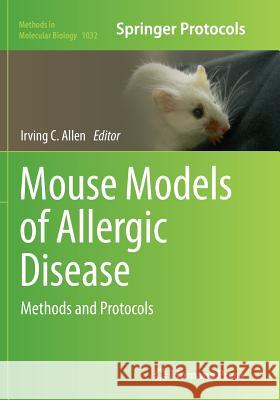Mouse Models of Allergic Disease: Methods and Protocols » książka
topmenu
Mouse Models of Allergic Disease: Methods and Protocols
ISBN-13: 9781493960200 / Angielski / Miękka / 2016 / 326 str.
Mouse Models of Allergic Disease: Methods and Protocols
ISBN-13: 9781493960200 / Angielski / Miękka / 2016 / 326 str.
cena 459,42 zł
(netto: 437,54 VAT: 5%)
Najniższa cena z 30 dni: 460,49 zł
(netto: 437,54 VAT: 5%)
Najniższa cena z 30 dni: 460,49 zł
Termin realizacji zamówienia:
ok. 20 dni roboczych.
ok. 20 dni roboczych.
Darmowa dostawa!
Kategorie BISAC:
Wydawca:
Humana Press
Seria wydawnicza:
Język:
Angielski
ISBN-13:
9781493960200
Rok wydania:
2016
Wydanie:
Softcover Repri
Numer serii:
000014950
Ilość stron:
326
Waga:
0.59 kg
Wymiary:
25.4 x 17.78 x 1.8
Oprawa:
Miękka
Wolumenów:
01
Dodatkowe informacje:
Wydanie ilustrowane











